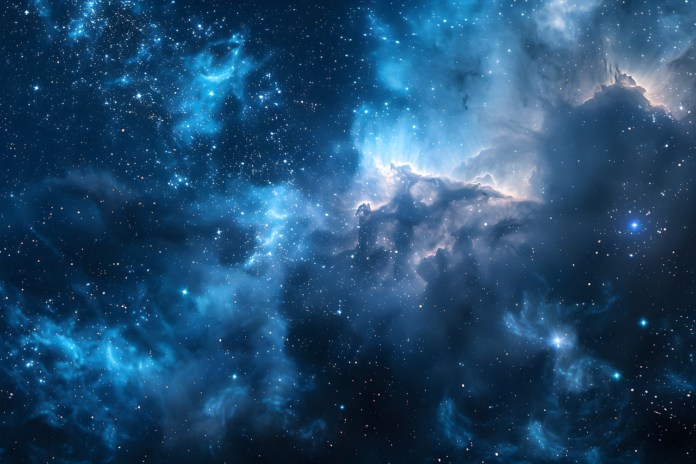The night sky has always fascinated people. Throughout history, humans have been captivated by the origins and development of stars. It’s natural to be curious about what will happen not only to our Sun but also to all the stars in the cosmos. Below are some of the most interesting facts about the evolution of stars in the universe:
- Star Formation: All stars form from diffuse, cold clouds of interstellar gas, which collapse under the influence of gravity. The concentration of atoms in such gas is about a few hundred particles per cubic centimeter. As they gradually compress, they heat up to the point where nuclear fusion reactions begin, converting hydrogen into helium. At this point, the protostar becomes a main-sequence star.
- Massive Clouds: The mass of interstellar gas clouds can reach millions of times that of the Sun.
- Hydrogen Content: At the beginning of their life, stars contain about 91% hydrogen.
- Lifetimes: The most massive stars live for only a few million years, during which time hydrogen turns into helium. Stars with masses similar to the Sun’s live for about 10 to 12 billion years. The smaller the star, the longer its life span: the least massive stars can live for trillions of years.
- Heavy Elements: In massive stars, heavy elements like carbon and even iron can be synthesized. However, further element synthesis is prevented due to the high energy requirements.
- Oldest Star: The oldest star in the universe formed about 99 million years after the Big Bang.
- Blue Dwarfs: Low-mass stars (around one-tenth the mass of the Sun) gradually become hotter as they accumulate helium, eventually turning into blue dwarfs.
- Red Giants and White Dwarfs: Stars with masses close to the Sun’s gradually evolve into red giants. Later, they become white dwarfs.
- Supergiants: Massive stars with masses more than eight times that of the Sun evolve into supergiants.
- Wolf-Rayet Stars: The most massive stars enter the Wolf-Rayet phase toward the end of their lives, producing strong stellar winds for about 100,000 years before exploding as hypernovae.
- White Dwarfs: White dwarfs are small, extremely hot stars (about the size of Earth) and are essentially the degenerate cores of stars. These objects no longer generate energy but shine due to their high temperatures.
- Brown Dwarfs: Brown dwarfs can sustain nuclear fusion of deuterium, but their mass is too small to sustain long-term fusion. Even if they burn hydrogen, it depletes quickly and cannot serve as a continuous energy source.
- Neutron Stars: Neutron stars are incredibly dense. For example, with a radius of just 10 kilometers, a neutron star can have twice the mass of the Sun.
- Black Holes: A black hole is the final stage of evolution for stars whose cores exceed 2.5 times the mass of the Sun. The radius of such an object compresses so much that the escape velocity equals the speed of light. Black holes can form after the collapse of supernovae.
- Supermassive Black Holes: Supermassive black holes can weigh millions or even billions of times more than the Sun. One such black hole is located at the center of our galaxy. The most massive known black hole is in the quasar TON 618 in the constellation Canes Venatici, about 10 billion light-years from Earth, with a mass 66 billion times that of the Sun.
- Quasars: Quasars are the brightest objects in the observable universe. They are active galactic nuclei where a supermassive black hole is absorbing matter. Quasars can be seen from great distances and are essential for studying the structure and origin of the universe. The light from the most distant quasar started traveling about 690 million years after the Big Bang.
What Will Happen to Stars and the Universe?
The future of the universe is equally fascinating. Here are some intriguing facts about the future evolution of stars:
- End of Stars: Nothing in the universe lasts forever. Depending on their mass, stars will ultimately turn into white dwarfs, neutron stars, or black holes. Black holes will eventually evaporate and disappear due to Hawking radiation.
- The Sun’s Future: In about 7.6 billion years, the Sun’s outer layers will be ejected, forming a planetary nebula, with a white dwarf at its center.
- Black Hole Gravity: The gravity of black holes is so strong that nothing, not even light, can escape.
- Big Rip Hypothesis: Some theories suggest that after about 22 billion years, the universe could undergo a “Big Rip.”
- Fading Evidence of the Big Bang: In about 100 billion years, the universe’s expansion will hide all evidence of the Big Bang as everything moves beyond the observable event horizon, assuming the universe continues expanding and the Big Rip hypothesis is incorrect.
- End of Star Formation: Star formation is expected to cease entirely after about 100 trillion years. The universe will enter a “decay era” where the only remaining cosmic objects will be white dwarfs, neutron stars, black holes, and brown dwarfs—the last remnants of star evolution. No sources of light will remain.
- Nucleon Decay: All nucleons are predicted to decay within about 2×10362 \times 10^{36} years.
- Black Hole Era: Afterward, black holes will dominate the universe. The largest black hole is predicted to have a mass 20 trillion times that of the Sun. After about 1.7×101001.7 \times 10^{100} years, this supermassive black hole will evaporate due to Hawking radiation. Once even protons decay, the universe will enter an era of eternal darkness.
The cosmos holds countless mysteries. As astronomical science advances, scientists uncover more and more facts about the evolution of stars. These discoveries are crucial for solving energy challenges and achieving peaceful space exploration. It’s even possible that in the future, we might have endless energy sources or embark on space travel.
